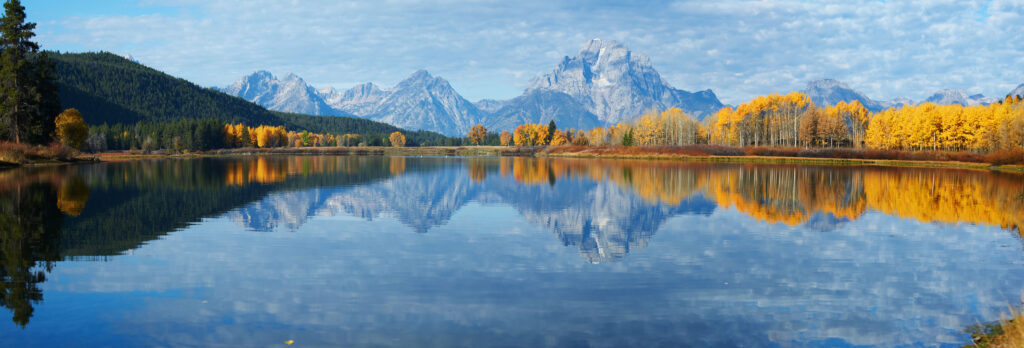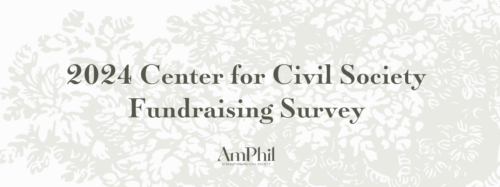Our national parks are one of our nation’s greatest treasures, but they need caring for. Private philanthropy can help.
America’s National Parks have been a treasure owned by the people for generations. In 1864, President Lincoln signed a bill stating that Yosemite Valley was to be “held for public use, resort, and recreation” for all time. This idea of publicly owned spaces led to President Grant signing an 1872 bill that officially named Yellowstone the first National Park. In 1916, Congress established the National Park Service, an agency today tasked with preserving the now 63 National Parks and numerous other sites, so that people could be inspired, be active, and enjoy the outdoors.
Documentary filmmaker Ken Burns was spot on when he titled his film on the subject, The National Parks: America’s Best Idea, by drawing inspiration from Wallace Stegner, who once said, “National parks are the best idea we ever had. Absolutely American, absolutely democratic, they reflect us at our best rather than our worst.” The parks have become known as the quintessential American getaway, offering individuals and families an affordable respite from everyday life.
Unfortunately, many of our National Parks have been rendered unbearable due to overuse and crowding in recent years. Visiting iconic parks such as Yellowstone, Yosemite, and Zion often involves sitting in traffic for miles before passing through the park gate, only to then search and battle for a parking spot—merely to have access to a trail that might resemble a line at Disney World.
Our park system has in many ways been too successful. Fueled by a rising middle class, a newfound importance on physical and mental health—not to mention selfie culture—it is no surprise that people are flocking to the parks. But the bandwidth that the parks can sustain environmentally and aesthetically has been pushed to a breaking point. Many parks welcome over two million visitors per year, with Great Smoky Mountains National Park the busiest, tallying over 12 million visitors in 2020.
Indeed, for many Americans, our park experiences have become stressful to plan and complete, falling far short of John Muir’s vision of preserving beautiful spaces where nature’s peace can flow into us.
So, how might philanthropy play a role in restoring our parks? This is why the history of the parks system is so crucial to understand, as there is a long and rich history of partnership between the National Park Service and philanthropists. Many acres of what today is park territory was contributed by private citizens—most notably large parts of Grand Teton and other parks were given by John D. Rockefeller, Jr. and his son, Laurance S. Rockefeller.
And it’s not just mega-donors who have made significant contributions. In the largest park fundraising venture to date, corporations joined with individuals, foundations, and other nonprofit entities in raising more than $350 million to refurbish the Statue of Liberty (not one of the official National Parks, but managed by the National Park Service) and restore Ellis Island’s Great Hall during the 1980s. Congress formally recognized the importance of private philanthropy to the parks in 1935 when it established the National Park Trust Fund Board to receive gifts for the benefit of the National Park Service and its activities.
Unfortunately, this body did not live up to expectations, and in 1967 Congress replaced it with a more productive successor, the National Park Foundation. Today, the foundation raises needed funds and works with corporate and community partners to “Inspire all people to connect with and protect America’s national parks.” In addition to this national foundation, many individual parks also have official nonprofit partner organizations that do similar work but with a special focus on that particular park, such as Yellowstone Forever.
The history and current ability of the national parks to raise funding and partner with various people and entities is unlike any other part of the federal government. Given this unique ability, there are some initiatives that the park service could consider to ensure that Americans can experience authentic and stress-free trips to the parks well into the twenty-first century. Admittedly, these are audacious programs that would take significant resources from government, philanthropists, and other partners.
The first needed improvement is transportation. Getting to and around many national parks has become too complicated and time consuming. Most parks do not currently have train or bus routes that bring people directly to parks or even their nearest town. The result is heavy traffic as visitors all have to drive their cars to the parks. While the parks were intended to be serene places to escape hectic urban life, we have instead transformed them into parking lots.
What’s more, the parks actually have a history with railroads. The Great Northern Railway, for example, brought people to Glacier National Park in the early twentieth century. If local communities found ways to help even a fraction of visitors find their ways to parks with trains and buses instead of cars, we would see a significant improvement. Perhaps the most exciting possibility for the future of the parks is the prospect of automated shuttles, such as one currently in a pilot test at Yellowstone known as the TEDDY. It is not far-fetched to suggest that self-driving automated vehicles might soon make the parks much more enjoyable—and philanthropic partnerships could help make that transition occur even faster.
The next stride that could be taken is to establish more parks within the system itself. While the National Park Service currently administers hundreds of unique sites from cemeteries to battlegrounds, only 63 are currently considered fully fledged National Parks. In this regard, the government actually has a decent record, as local communities are often eager to have a National Forest or National Lakeshore upgraded to the coveted “National Park” status. Congressional delegations are often more than happy to sponsor the legislation, and Presidents are also happy to sign on. Recent examples of new parks entered into the system include the Indiana Dunes National Park in 2019 and New River Gorge National Park and Preserve in 2020.
The argument about the need for new parks is based on the fact that the current system is lopsided to the western United States. More parks established in the eastern half of the country can provide a National Park experience to the millions of would-be visitors who would otherwise need to plan an expensive trip out west. And while simply converting a National Forest into a National Park does not miraculously transform that land into something like Yosemite Valley, the fact is true National Parks attract visitors and have potential to offer more—and that brings me to what our parks need most.
Anyone who has attempted to plan a truly remarkable trip to one of the parks knows just how difficult it can be to secure reservations at the National Park lodges. Of course, many parks might have privately owned options such as hotels in the nearest town. But, the National Park Service Rustic style of architecture, affectionately referred to as “Parkitecture”, is the iconic timber-based hotel that many associate with the parks. The best example is probably the Old Faithful Inn at Yosemite: a log hotel constructed in the early twentieth century, complete with a grand multi-story interior lobby.
The problem is that booking rooms at these historic lodges is quite a challenge. Reservations often open a full year in advance, and rooms at the best lodges for summer nights are reserved as soon as they become available, leaving those without the ability to plan and put down a deposit out of luck. And while private hotels and resorts near some parks are great alternatives, official park lodges usually offer things they cannot. For one, official lodges on park land are usually in a prime location, allowing guests to walk out and have easy access to landmarks and trails. Private lodging is nearly always in a nearby town, adding to the traffic congestion as those guests enter and leave the parks.
Second—and this is a critical point—official park lodges offer affordable options, making our parks more inclusive. Private hotels and resorts have increasingly become more glamorous with more amenities, but the official lodges located in the parks have mostly remained historic and centered around nature and the park experience. What many people might not realize is that the government awards contracts to private companies to manage the lodges. This is just another example of the National Park Service partnering with private industry, and it has been very successful. The private sector efficiently manages these lodges which sit on land owned by the people, and the National Park Service approves room rates to a certain extent, making rooms affordable and continuing the legacy of what the parks stand for.
Unfortunately, very few new lodges have been constructed in the past six decades. Park visitorship has increased nearly threefold the past half century, yet we have basically the same lodging capacity. Access to camping sites is not much better. Given the history of philanthropic partnership with the National Parks, raising funds to construct new lodges that can offer future generations memorable trips to these wonderful places would not be an unreachable goal. Moreover, such fundraising could be a nonpartisan effort and a widely applauded investment for American civic life.
All of this is not to say that philanthropy alone can fix the problems facing the National Parks. Clearly, the government plays a significant role, and reducing the parks system to being dependent upon corporate or philanthropic support would be antithetical to the original idea of the parks. However, history also tells us that while the government has set aside this land for our enjoyment, partnerships and philanthropy have improved these lands and made them more accessible over time. While any improvements or construction will need to be made in ways that ensure the sustainability and natural beauty of the land, there is a clear demand for time at our National Parks. Hopefully, Americans can once again improve our parks, with philanthropy once again playing a leading role.






